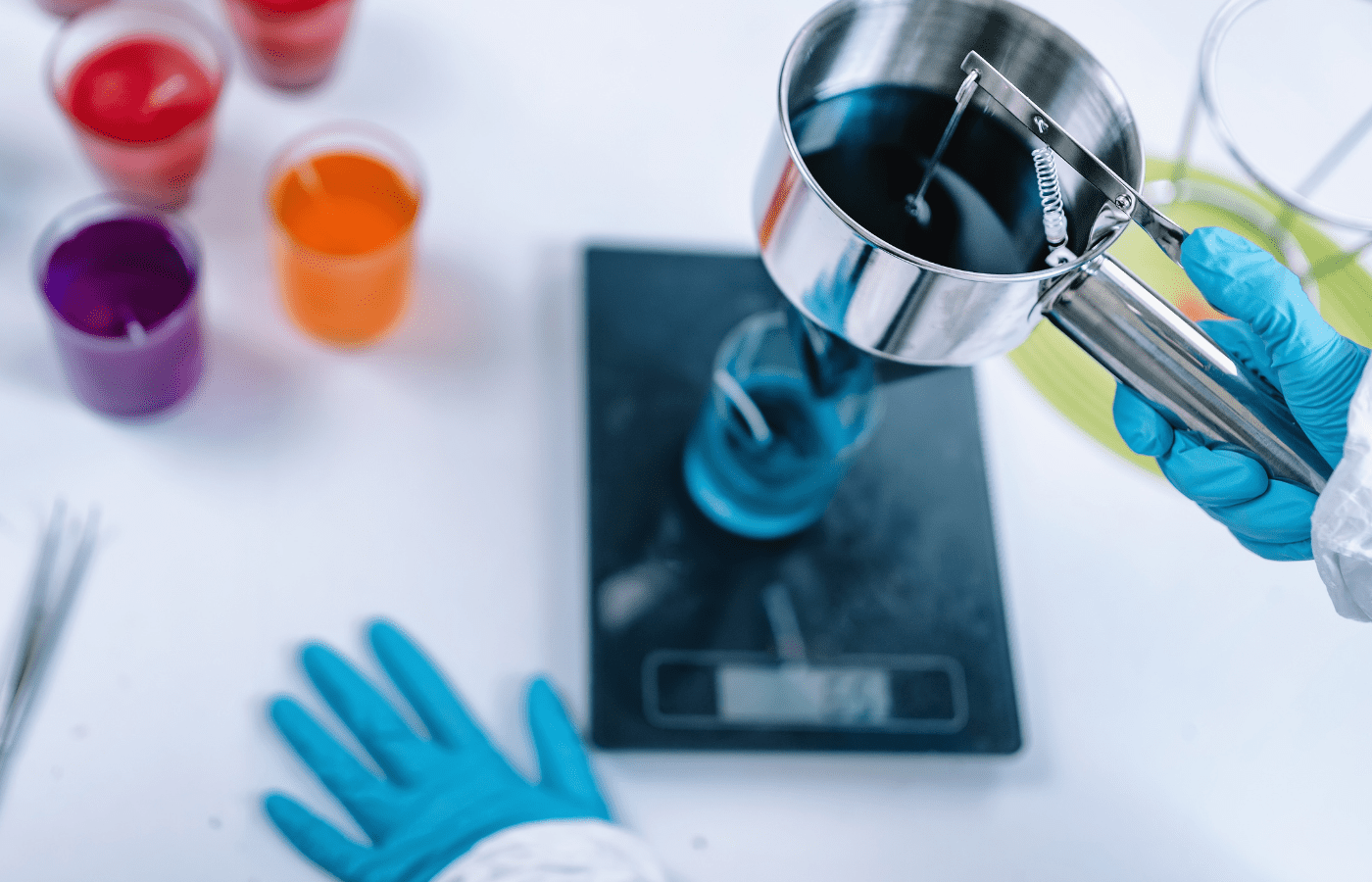If you’re new to candle making and wondering whether you’ll need a scale to make candles, the answer is a resounding yes. One of the most critical pieces of candle making equipment is an accurate weighing scale, which will help you measure out components like wax, aroma oils, and candle colors.
When producing batches of candles, the wax-to-fragrance-oil ratios must remain consistent. Your candles risk smelling overly strong or weak or becoming unstable due to too much fragrance oil if you don’t use the right mix of ingredients. Accurate measuring will also ensure that none of your materials are wasted, saving you money.
Make sure you get a scale before you start producing candles. It doesn’t need to be anything sophisticated; all you need is something that can measure in ounces (oz) or grams (g). Weight consistency is the holy grail of candles.
Why Do You Need a Scale to Make Candles?
The proper amount of fragrance oil and other additions are mixed into the wax using high-quality scales. We’re sure you’re aware of the implications of erroneous candle measurements: weak or no smell throw, candle sweating, and fragrance oil collecting at the bottom.
Fragrance oil and wax are essential components in each candle creation. Changing the quantity of either will have a big impact on the end product. Candles containing 1% to 2% additional fragrance oil over another are arguably a whole new design, even if all is the same!
As a result, if you want to make consistent candles, you’ll need a precise method for measuring your materials.
What Kind of Scale Is Needed for Candle Making?
The best scale for creating candles is a digital scale that can also be used in the kitchen. It should be able to manage up to 10 pounds of weight with accuracy and precision down to the tenth (0.1) of a measurement.
The bench scale is usually the best scale for creating candles. They’re compact, small weighing scales that can be used anywhere, and they usually have the right full capacity plus readability for candle making.
When purchasing a candle manufacturing scale, it’s crucial to assess the size of your operation, since this will influence whether you need a bigger capacity scale for larger batches or a lower capacity instrument.
When it comes to candlemaking, it’s necessary to try different recipes from time to time. The stats will not always be the same. Some will be measured in kilos and grams, while others in pounds and ounces. A conversion button allows you to quickly switch between them without having to perform time-consuming conversion calculations.
We recommend using a precise scale that measures in tenths like this food scale by Nicewell on Amazon.
Can You Use a Kitchen Scale for Candle Making?
While any scale might potentially be used to make candles, greater candle-making scales would perform far better. Using regular kitchen scales to make candles can result in erroneous results because they are generally cheaply manufactured and not built to last.
A higher-end weighing scale will offer you more accurate results, have additional features like percentage weighing, and be made to last longer, saving you time and money long term.
It’s a huge letdown to spend all that time diligently and lovingly producing a batch of candles only to discover the aroma throw is weak or the candles aren’t evenly distributed enough to sell. It’s impossible to overestimate the importance of having the correct tools for the job. That holds for both finding a good scale and choosing the correct wax.
To weigh paraffin or vegetable wax, Vybar, stearic acid, aroma oils, and other components, a compact digital kitchen scale capable of accurately measuring weights up to 10 pounds (5 kilos) would suffice. Also, the “tare” function (which subtracts the container’s weight from the net weight) will make your life much easier.
Are Candles Measured in Weight or Volume?
Even though your candle fragrance is a liquid, it is recommended that you measure it by weight rather than volume for the following reasons: Measuring all of your ingredients by weight, including your candle scent, will make the process go much more smoothly because you won’t have to convert between units. Fragrance percentages range from 2% to 10%, depending on the intensity of the aroma.
Manufacturers specify weight as the conventional unit of measurement for candle wax oil retention. This is not a measurement of volume. When a producer says a wax can hold 12 percent scent, that means it can hold 12 percent of its weight in oil.
A reliable and exact measuring glass or beaker makes measuring the volume of a liquid sample. Because wax is a solid, estimating candle supplies by volume has an inherent flaw. You’d have to melt it down and measure it in a beaker or other container, which is a time-consuming process.
You might also use approximate approximations to measure out blocks of wax by multiplying the width, height, and depth to find the volume. Another problem is that because various scents have varying densities, gauging by volume can easily result in measurement inaccuracies.
Final Thoughts
Digital scales are among the most critical candle-making supplies you’ll need to get the job done well. Always use a scale to weigh your candle wax and candle fragrance oil rather than measuring in cups or tablespoons. Always weigh instead of measuring by volume.
Because various candle fragrance oils generally are heavier than others. Unless you are using scales, you won’t always get the exact amount. You should not use the same balance scales that you use to weigh food because they are less precise.
When candle-making one of the most important things to remember is to measure the right amount of materials – if you use too much, you’ll waste money on leftovers, and if you use too little, you won’t have enough to make the necessary number of goods.
When it comes to measuring wax, it’s better to get it right the first time. This is the most important element of a candle, and you must get the measurements correct so that you can figure out how much wax to use even if you’re using a new container.


